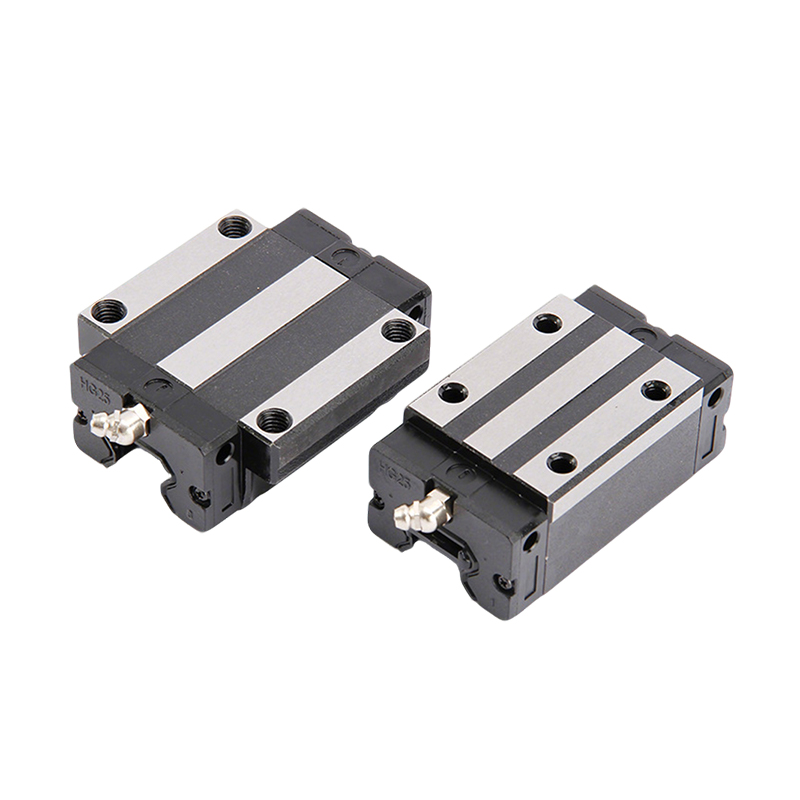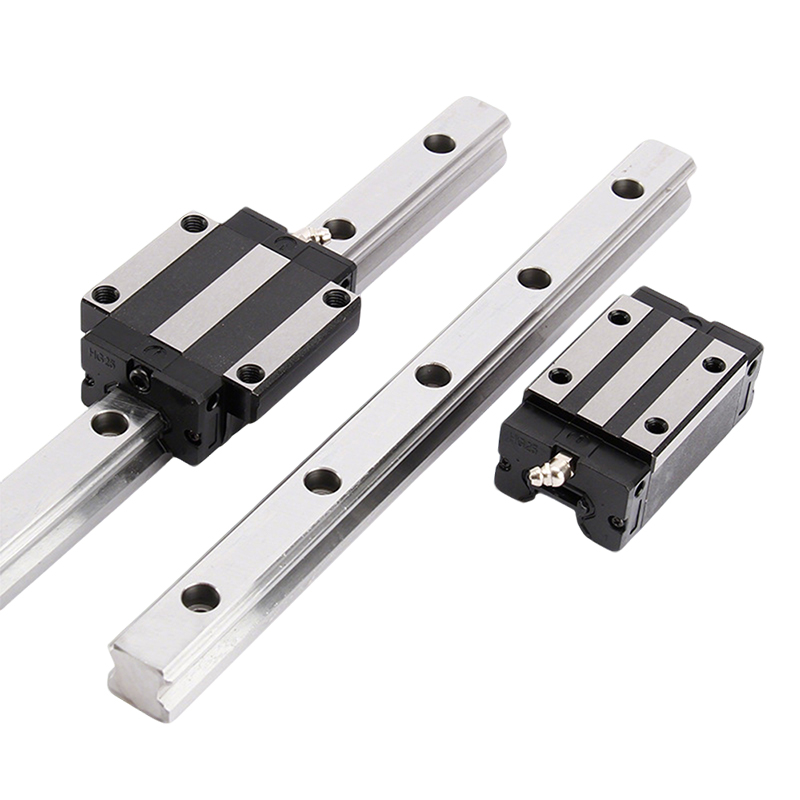In automatisierten Anlagen, CNC-Werkzeugmaschinen und sogar 3D-Drucker, Linearführungen Linearführungen fungieren als „Gerüst“ präziser Kraftübertragung und tragen die entscheidende Verantwortung für den stabilen Betrieb der Anlagen. Doch kennen Sie dieses scheinbar einfache Bauteil wirklich? Dieser Artikel enthüllt die Feinheiten von Linearführungen.

Linearführungen bestehen aus vier Kernkomponenten: dem Schienenkörper, dem Gleitblock, den Kugeln (oder Rollen) und den Dichtungselementen. Der Schienenkörper wird üblicherweise aus hochkohlenstoffhaltigem Stahl gefertigt, dessen Oberflächen präzisionsgeschliffen und gehärtet sind, um eine Härte von HRC 58–62 zu erreichen und so eine hohe Verschleißfestigkeit zu gewährleisten. Der Gleitblock verfügt über einen Kugelumlaufmechanismus, der eine reibungsarme Bewegung in präzise gefertigten Laufbahnen ermöglicht.
Das Dichtungssystem ist eine oft übersehene, aber entscheidende Komponente. Hochwertige Schienenführungen sind mit mehrlagigen Labyrinthdichtungen ausgestattet, die das Eindringen von Verunreinigungen wie Metallspänen und Staub wirksam verhindern und gleichzeitig das Schmierfett zurückhalten. Bestimmte Spezialmodelle verfügen zudem über Abstreifer, die Ablagerungen während des Hochgeschwindigkeitsbetriebs automatisch von der Schienenoberfläche entfernen.

Die Tragfähigkeit ist ein primärer Leistungsindikator. Führungen der Klasse C halten statischen Nennlasten bis zu 30 kN stand, während hochbelastbare Varianten der Klasse H Lasten über 100 kN aufnehmen können. Ingenieure müssen vertikale, horizontale und Momentenlasten gleichzeitig berechnen und eine Sicherheitsmarge von 20 % einplanen. Unter besonderen Betriebsbedingungen sind zusätzlich Stoßlastfaktoren zu berücksichtigen.
Die Genauigkeitsklassen beeinflussen die Geräteleistung direkt und reichen von Standard- und Präzisions- bis hin zu Ultrapräzisionsklassen. Dabei muss jedoch der Einfluss von Temperaturschwankungen auf die Genauigkeit beachtet werden: Bei einem Temperaturanstieg von 1 °C dehnt sich eine 1 Meter lange Führungsschiene thermisch um etwa 11 μm aus.
Die Schmierung bestimmt die Lebensdauer. Es wird empfohlen, Lithiumfett alle 100 Kilometer zu erneuern und in Umgebungen mit hohen Temperaturen auf Molybdändisulfid-Schmierstoffe umzusteigen. Neue selbstschmierende Lagerbuchsen verwenden ölgetränkte Sinterlagermaterialien, wodurch sich die Wartungsintervalle verdreifachen. Wichtig: Schmierstoffe verschiedener Hersteller dürfen nicht gemischt werden, um chemische Reaktionen zu vermeiden, die die Schmierleistung beeinträchtigen.
Reinigungs- und Schutzprotokolle sollten standardisiert werden. Spezielle Führungsschienenabdeckungen sind unerlässlich; für staubige Umgebungen werden Faltenbalgschutzvorrichtungen empfohlen. Die Schienenoberflächen sollten wöchentlich mit Vliestüchern und Spezialreinigern gereinigt werden. Der Einsatz ätzender Lösungsmittel wie Aceton ist unbedingt zu vermeiden. Bei Anlagen, die länger als 72 Stunden stillstehen, sollte Rostschutzöl aufgetragen und in feuchten Umgebungen Luftentfeuchter eingesetzt werden.
Bei Fragen oder Anliegen kontaktieren Sie uns bitte. Wir sind rund um die Uhr für Sie erreichbar.